Skidding and Hauling: Transporting Timber to Mills
- September 9, 2024
- 1 comment
Timber transport plays a vital role in the forestry industry, serving as the bridge between harvesting operations and the final stages of processing. The ability to move logs efficiently from the forest to the mill is crucial not only for the economic viability of forestry operations but also for ensuring the sustainability of forest ecosystems. Among the key methods of timber transport are skidding and hauling, each serving a distinct purpose in the overall process.
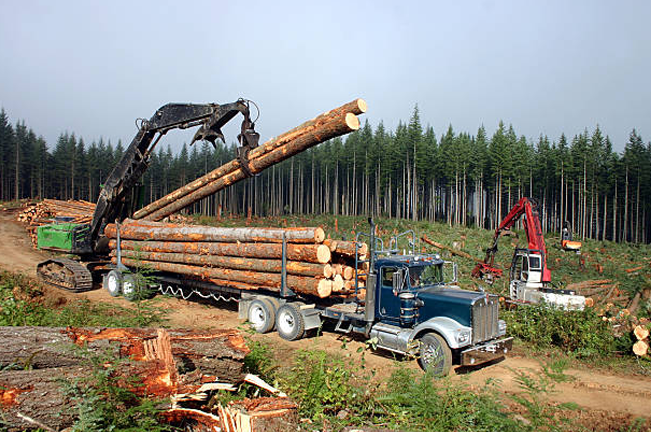
Skidding involves dragging felled logs from the cutting site to a landing area, where they can be further processed or loaded onto vehicles for transportation. Hauling, on the other hand, refers to the movement of these logs from the landing area to the mill, typically over longer distances. Both processes are integral to the timber supply chain, and their efficiency can significantly impact both the economic outcomes and environmental footprint of forestry operations.
Table of Content
- Skidding: The First Step in Timber Transport
- Hauling: Moving Timber to the Mill
- Environmental Considerations in Timber Transport
- Economic Aspects of Timber Transport
- Future Trends in Timber Transport
- FAQs
Skidding: The First Step in Timber Transport
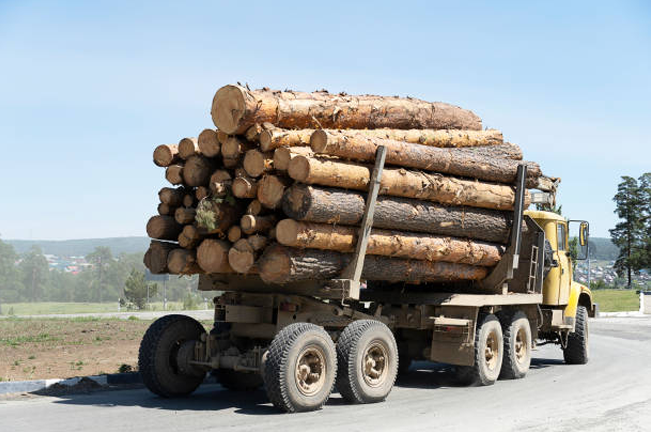
Definition and Purpose of Skidding
Skidding is the initial stage of timber transport, where logs are dragged or pulled from the cutting site to a central location known as the landing. This process is crucial because it prepares the logs for subsequent transportation, ensuring they are easily accessible and ready for loading onto hauling vehicles. The primary goal of skidding is to move logs efficiently while minimizing damage to the timber and surrounding environment.
Types of Skidding Equipment
Various types of equipment are employed in skidding, each suited to different terrains and operational needs. Cable skidders, which use a winch to pull logs, are ideal for steep or rugged terrain. Grapple skidders, equipped with a hydraulic arm to grasp and move logs, are commonly used in flatter areas where maneuverability is key. In some regions, particularly in sensitive or hard-to-reach areas, horses are still used for skidding due to their minimal environmental impact and ability to navigate challenging landscapes.
Techniques for Effective Skidding
Effective skidding requires careful planning and execution to minimize environmental impact and maximize operational efficiency. Best practices include selecting the most appropriate equipment for the terrain, using designated skid trails to reduce soil disturbance, and employing techniques that prevent damage to remaining trees and vegetation. Ensuring that logs are properly aligned and spaced can also enhance the safety and efficiency of skidding operations.
Challenges in Skidding Operations
Skidding operations often face a range of challenges, from difficult terrain and weather conditions to environmental concerns such as soil compaction and erosion. Navigating these challenges requires a combination of strategic planning and the use of innovative technologies. For instance, modern skidders are often equipped with GPS systems to optimize trail selection and minimize ecological disruption. Additionally, advancements in skidding equipment have improved the ability to operate in challenging conditions, reducing the environmental impact of skidding activities.
Hauling: Moving Timber to the Mill
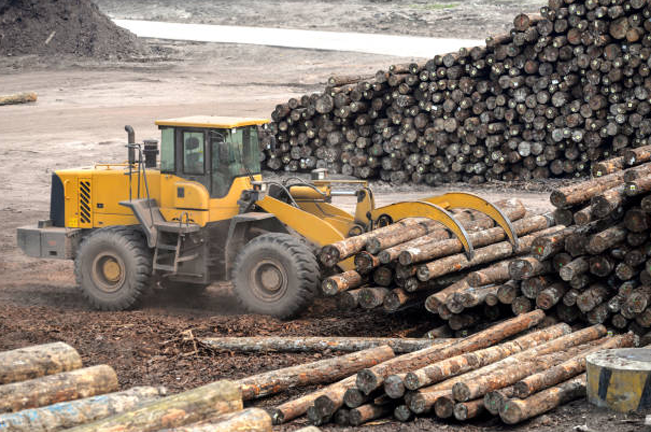
Definition and Purpose of Hauling
Hauling is the next critical step in the timber transport process, involving the movement of logs from the landing site to the mill. This stage typically covers longer distances and requires more specialized vehicles capable of carrying large loads safely and efficiently. The primary goal of hauling is to deliver logs to the mill in a timely manner while minimizing costs and ensuring compliance with safety regulations.
Types of Hauling Vehicles
A variety of vehicles are used in hauling, each designed to meet specific transport needs. Log trucks, often equipped with trailers, are the most common and are used for transporting logs over roads to the mill. In some cases, rail transport is employed, particularly when large volumes of timber need to be moved over long distances. The choice of vehicle depends on factors such as load capacity, road conditions, and the distance to be covered.
Best Practices for Hauling
Efficient hauling requires careful planning and adherence to best practices. This includes ensuring that logs are securely loaded and balanced to prevent shifting during transport, which could lead to accidents or damage. Safety protocols, such as regular vehicle inspections and adherence to weight limits, are essential to prevent accidents and ensure the integrity of the logs being transported. Additionally, route planning should consider road conditions, traffic patterns, and potential hazards to optimize travel time and reduce fuel consumption.
Challenges in Hauling Operations
Hauling operations face several challenges, including varying road conditions, weather-related disruptions, and regulatory requirements that must be met to ensure safe and legal transport. Innovations in vehicle design, such as the development of more fuel-efficient and environmentally friendly trucks, are helping to address some of these challenges. Additionally, advancements in route optimization software allow for more efficient planning and execution of hauling operations, reducing costs and improving overall efficiency.
Environmental Considerations in Timber Transport
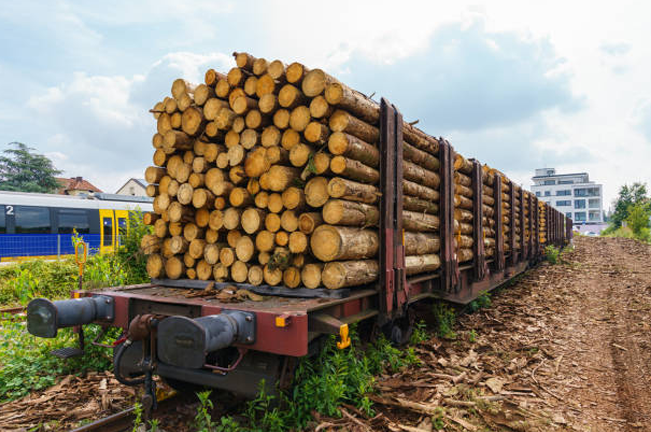
Impact of Skidding and Hauling on Forest Ecosystems
Both skidding and hauling can have significant environmental impacts, particularly if not managed carefully. Skidding can lead to soil compaction, erosion, and damage to remaining vegetation, while hauling can contribute to road degradation, increased emissions, and habitat disruption. Understanding and mitigating these impacts is crucial for sustainable forestry practices.
Sustainable Practices in Timber Transport
To reduce the ecological footprint of timber transport, a variety of sustainable practices can be employed. These include using low-impact skidding techniques, optimizing skid trail layout, and selecting hauling routes that minimize disturbance to sensitive areas. Additionally, the use of modern technology, such as GPS-guided equipment and fuel-efficient vehicles, can further enhance the sustainability of timber transport operations.
Economic Aspects of Timber Transport
Cost Factors in Skidding and Hauling
The costs associated with skidding and hauling are influenced by various factors, including the distance between the cutting site and the mill, terrain difficulty, equipment used, and fuel prices. Effective cost management is essential for maintaining profitability in the forestry industry, and this often involves optimizing transport operations to reduce unnecessary expenses.
Efficiency and Profitability
There is a direct correlation between the efficiency of timber transport operations and profitability. Efficient skidding and hauling practices can significantly reduce costs, increase the speed of operations, and ensure that logs arrive at the mill in optimal condition. This not only improves the bottom line but also contributes to the overall sustainability of the forestry industry.
Market Influence on Transport Strategies
Market demand and timber prices play a significant role in shaping transport strategies. When demand is high, there may be a greater emphasis on speed and efficiency to maximize output. Conversely, during periods of lower demand, cost-saving measures may take precedence. Understanding these market dynamics is crucial for developing effective transport strategies that align with industry trends and economic conditions.
Future Trends in Timber Transport
Technological Innovations
The future of timber transport is likely to be shaped by ongoing technological advancements. Innovations in skidding equipment, such as the development of more powerful and environmentally friendly machines, are expected to improve efficiency and reduce environmental impact. Similarly, advancements in vehicle technology, including electric and hybrid log trucks, could significantly lower the carbon footprint of hauling operations.
Sustainability and Efficiency
As sustainability becomes an increasingly important consideration in the forestry industry, transport strategies will need to evolve to meet these demands. This may involve adopting new technologies and practices that prioritize environmental stewardship while maintaining or improving operational efficiency. Future challenges will likely revolve around balancing these two priorities in a way that supports both economic and environmental goals.
Frequently Asked Questions (FAQs)
- What is skidding in timber transport?
Skidding is the process of dragging or pulling felled logs from the cutting site to a central collection point, known as the landing, where they are prepared for further transport to the mill. - What equipment is typically used for skidding?
Common skidding equipment includes cable skidders, grapple skidders, and, in some cases, horses. The choice of equipment depends on the terrain and specific operational needs. - How does skidding impact the environment?
Skidding can cause soil compaction, erosion, and damage to remaining vegetation. To minimize these impacts, operators use designated skid trails and low-impact techniques. - What are the main challenges in skidding operations?
Challenges include difficult terrain, weather conditions, and minimizing environmental impact. Operators often rely on advanced equipment and strategic planning to overcome these obstacles. - What is the purpose of hauling in the timber transport process?
Hauling involves transporting logs from the landing site to the mill. It covers longer distances than skidding and requires specialized vehicles to safely and efficiently move large loads. - What types of vehicles are used for hauling timber?
Hauling vehicles include log trucks, trailers, and in some cases, rail transport. The choice of vehicle depends on factors like load capacity, road conditions, and distance. - What are the best practices for hauling timber?
Best practices include proper loading and securing of logs, adhering to safety protocols, and optimizing routes to reduce fuel consumption and travel time. - What environmental considerations are involved in skidding and hauling?
Both processes can impact the environment through soil disturbance, road degradation, and emissions. Sustainable practices and modern technology help reduce these impacts. - How do skidding and hauling costs affect the forestry industry?
Costs are influenced by factors like distance, terrain, equipment, and fuel prices. Efficient operations can reduce expenses and improve profitability in the forestry industry. - What role does market demand play in timber transport strategies?
Market demand and timber prices influence transport strategies. High demand may prioritize speed and efficiency, while lower demand may focus on cost-saving measures. - What are some emerging technologies in timber transport?
Emerging technologies include advanced skidding equipment, electric and hybrid log trucks, and GPS-guided systems that enhance efficiency and reduce environmental impact. - How can skidding and hauling operations be made more sustainable?
Sustainability can be improved through practices such as using low-impact skidding techniques, optimizing vehicle efficiency, and implementing eco-friendly technologies. - What are the future trends in skidding and hauling?
Future trends include technological innovations, increased focus on sustainability, and the development of more efficient and environmentally friendly transport methods. - Why is skidding and hauling important in the forestry industry?
Skidding and hauling are essential for moving timber from forests to mills, directly impacting the economic viability and environmental sustainability of forestry operations.

Gilbert Griffin
Forestry AuthorGilbert Griffin is a forest management expert specializing in sustainable practices, forest health, conservation, and land management. With extensive knowledge in pest control, disease management, and habitat restoration, Gilbert develops strategies to preserve forest ecosystems and biodiversity. Passionate about the natural world, Gilbert adapts to changes in forest management and stays updated through continuous learning. Gilbert also provides seasonal advice to optimize forest care throughout the year.



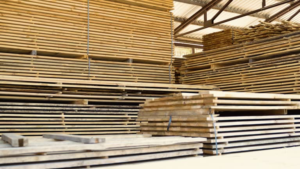

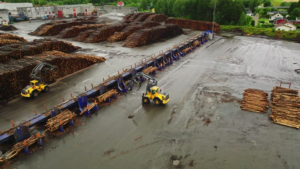
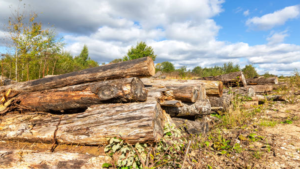
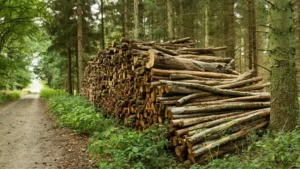
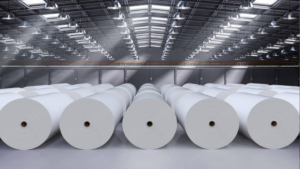
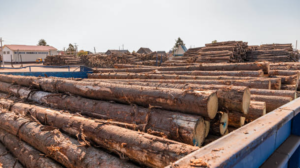

Is there a way to estimate the damage done to roads by hauling timber?
Kelsie Jacob
September 16, 2024 11:38 pm